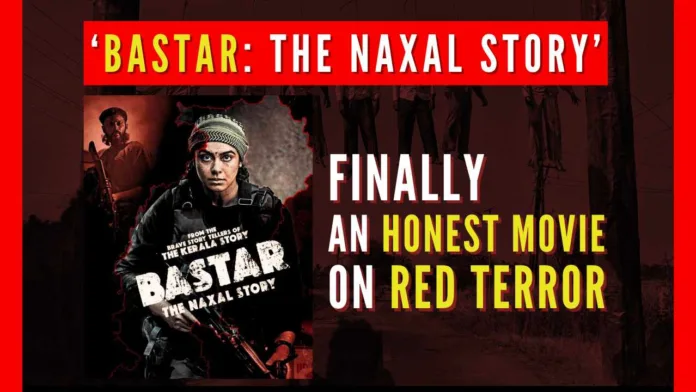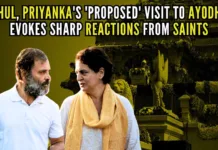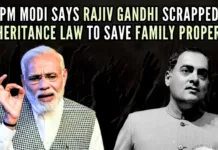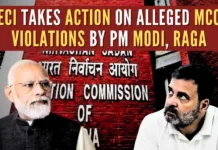
Bastar highlights chilling truth behind Naxal terror
In the series of what are termed anti-propaganda films, finally, there comes the film that depicts Maoist terrorism in the deep jungles of Bastar. The mainstream propaganda of left-wing extremism (LWE) variously called Naxalism/ Maoism has been so powerful that that it was always portrayed as support to `tribal rights’ against the mighty `state’ of India or the big bad corporate world.
`Bastar: The Naxal Story’ from the makers of the blockbuster `The Kerala Story’, with the duo of Vipul Shah and Sudipto Sen, tells the heart-wrenching, hitherto never portrayed story of the Red Terror, which reportedly extends from Nepal to the deep south, generally called as the Red Corridor. The movie is situated in Dantewada, Bastar in Chattisgarh.
The film portrays the Maoist violence, the jungle law of the `praja courts’, and the massacre and hacking of people who they identify as `police informers’. A school teacher who dares to fly the Indian flag is hacked to pieces in front of his wife and daughter, the wife Ratna, poignantly portrayed by Indira Tiwari, is forced to carry the pieces of his body in a gunny sack to her hamlet. The naxal leader Lanka Reddy is played by Vijay Krishna menacingly well. IPS Neeraja Madhavan, shown as heading the state CRPF (Central Reserved Police Force), sensitively played by Adah Sharma makes it her mission to wipe out Maoism from the sacred Dandakaranya forests, and is aided by local tribal villagers and Salwa Judum. In the movie, she enables the formation of an indigenous tribal armed Special Police Officers group and trains them to take on the ruthless monstrosity of the Maoists. They take on the Maoists with their sophisticated fire-arms smuggled from other terror groups around the world; the indigenous anti-naxal tribal Salwa Judum armed group is raised by Rajendra Karma (played by Kishore Kadam) which also fights pitched battles with the Naxals. (Mahendra Karma was the actual name of the leader). The film also depicts how young children are recruited into left-wing extremist violence, against all known national and international conventions, legal frameworks, and our own national ethos. The film successfully and with empathy portrays the battlefield that was Bastar, the poor hapless tribal communities had nowhere to go.
The 6th April 2010 Dantewada horrendous ambush by Naxalite-Maoist insurgents from the Communist Party of India (Maoist) near Chintalnar village in Dantewada district, which mercilessly and inhumanly killed and burned 76 CRPF policemen is among the deadliest attacks seen in India. The movie depicts the nitty gritty details of this operation which occurred in the deep jungles of Bastar. (In a similar modus operandi, 25 CRPF jawans were killed in an ambush by Naxal forces in Sukma on 24th April 2017). The movie shows a sliced shot, reportedly censored, of a well-reported fact that a particular left-wing university in Delhi celebrated the CRPF killings under the aegis of the `JNU Forum against War on People’.[1]
The anti-Naxal tribal armed group, Salwa Judum then headed by the revered leader Mahendra Karma’s convoy along with a host of Chattishgarh’s political leaders including the then Congress leader Vidyacharan Shukla was blasted in May 2013, and close to 20 people were killed by the Maoists. The convoy was moving from Sukma in Bastar towards Jagdalpur. Despite a series of killings of the tribals and other local leaders, the Congress UPA govt headed by Manmohan Singh who called the naxal violence the `greatest internal threat’, couldn’t bring themselves to effectively tackle the internal insurgency mounted by the Maoists, which has gone on unabated for decades. The UPA govt also launched `Operation Green-hunt’ to eliminate the Red Corridor but couldn’t fight them on any fronts – whether ideologically, financially, or in curbing the `urban naxal’ networks which were part of the global left alliance. It is a public secret that the Maoists and their sympathizers were facilitating the flow of funds and firearms from terror and insurgency groups from external forces.
The movie clearly and explicitly depicts the entrenched ecosystem that runs across some universities, especially central universities, which are infested with urban naxals, known sympathizers of LWE (Left-wing extremism), and who actively recruited and indoctrinated students from college campuses. It also has a couple of symbolic but telling scenes where known jihadi and terror groups are confabulating with the Maoists, in the deep jungles of Bastar; they are brought together by academics and lawyers who fight the naxal cause in the courts; it is not at all a surprise that this nexus controls the left-wing ecosystem and managed to get a ban against Salwa Judum from the courts, which effectively snatched the only self-defence mechanism of the tribal communities against the Maoists, in their own native habitations.
The movie also recounts the well-established fact that Naxals are against any infrastructural development to ensure that tribal areas remain underdeveloped and unconnected to the mainstream so that the Maoists can wage their war against the State. They routinely blasted roads, schools, bore pumps, etc in not only Chattisgarh but in all the states that are part of the `Red Corridor’; people remember the infamous jailbreak in Jehanabad in Bihar, as well as the `People’s War Group (PWG)’ maximum violence that United Andhra Pradesh has seen when electric transformers and trains were blasted. The ill-advised move of the YSR Govt to lift the TDP govt-imposed ban and call the PWG for talks in 2004 was criticized by all Naxal-affected states, and gave time for PWG to regroup under the CPI (Maoist) banner. With the return of the Congress Govt in Telangana in 2023, it can be seen how a former Naxalite leader and poet, the Late `Gaddar’ is being promoted as a cult figure.
It is a known fact that many producer-directors of movies in many languages have leftist leanings and have been members of bodies like IPTA (Indian People’s Theatre Association). Film makers in many languages in India have lent their intellectual and creative heft to ideologically and morally support the cause of the Naxal violence, through their hyperbolic romanticized Robin Hood versions of do-gooders of the society, especially in the underdeveloped tribal areas of forests and vast hinterlands of the nation. Highly romanticized movies about the jungle guerilla warfare against the Indian state are too numerous, injecting the naxal sentiment in the garb of people’s civil rights, the `oppressive’ Indian state that suppresses tribal rights, social awareness movies, or commercial thrillers. The movies that immediately come to mind are Hazaaron Khwaishein Aisi, Chakravyuh, Newton, etc.
Telugu movie industry has a long history of left-leaning `socialist’ movies, with many producer-directors coming from Praja Natya Mandali background. However while the generation of the 1950s-60s had kept the cultural milieu intact, the latter period saw crude naxal films, colloquially called the Red Films. There were occasional movies that depicted both sides of the coin like Sindooram, People’s Encounter, etc. It is of some concern that Naxal-promoting movies are making a comeback in the last few years in Telugu- George Reddy, Virata Parvam, and Acharya to name a few, all played by `blockbuster stars’.
The strength of the movie Bastar lies in piecing together many actual acts of Maoist violence and developing a cohesive logical narration around it, which makes it a highly realistic cinema. The `critics’ who are still giving fire cover to Maoist violence are unable to refute a single fact from the movie, except saying that it is exaggerated. When we recollect, this is exactly the incoherent argument that was forwarded by the left cabal against Vivek Agnihotri’s `The Kashmir Files’ and other movies since. Hopefully, the trend of the new-age realistic cinema which is picking up untold stories from the past and present, and which speaks the truth is here to stay.
Note:
1. Text in Blue points to additional data on the topic.
2. The views expressed here are those of the author and do not necessarily represent or reflect the views of PGurus.
Reference:
[1] Pitched battle over ‘people’s war’ at JNU – Apr 11, 2010, ToI
For all the latest updates, download PGurus App.










